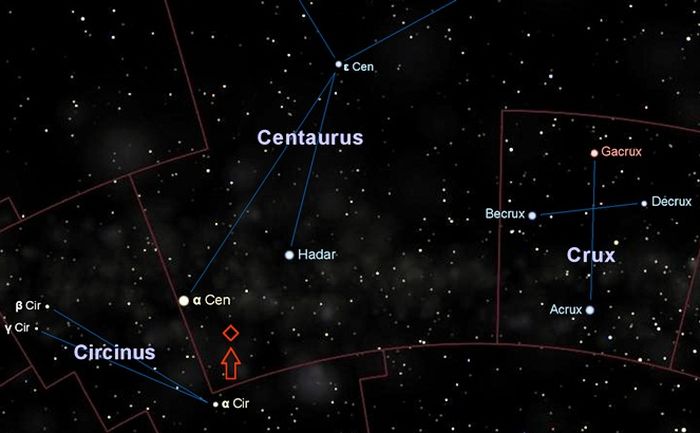IS SUN. Sidewalk
–
Illustration showing a close-up view of Proxima d, a planet candidate recently discovered orbiting the red dwarf star Proxima Centauri, the closest star to the Solar System. The planet is believed to be rocky and has a mass of about a quarter the mass of Earth.
–
Nationalgeographic.co.id—Proxima Centauri is a star of type M5.5 located 4.2 light-years away in the southern constellation Centaurus.
With the help of the European Southern Observatory’s Very Large Telescope (ESO’s VLT) in Chile, a team of astronomers has found evidence of another planet orbiting Proxima Centauri, the closest star to our Solar System. This candidate planet is the third planet detected in the system and the lightest ever found orbiting this star. With only a quarter of Earth’s mass, making this planet one of the exoplanet lightest ever found.
As reported Tech ExploristJoão Faria, a researcher at the Instituto de Astrofísica e Ciências do Espaço, Portugal said, “This discovery shows that our nearest stellar neighbor appears to be packed with exciting new worlds, within reach of further study and future exploration.”
Faria is the lead author of the study published in the journal Astronomy & Astrophysics on February 10, 2022 yesterday, which was packed with the title A candidate short-period sub-Earth orbiting Proxima Centauri★.

Wikipedia
–
Proxima Centauri position.
–
The newly discovered planet, named Proxima d, orbits Proxima Centauri at a distance of about four million kilometers, less than a tenth of Mercury’s distance from the Sun. It takes just five days to complete one orbit. Its orbit is located between the star and the habitable zone, which is the area around the star where liquid water can be on the planet’s surface.
The star is already known to host two other planets: Proxima b, a planet with a mass comparable to Earth that orbits the star every 11 days and is within the habitable zone, and candidate Proxima c, which is in its longest orbit of five years around the star.
Also Read: This new planet detected by NASA satellites will be ‘devoured’ by stars
Proxima b was discovered several years ago using the HARPS instrument on the ESO 3.6 meter telescope. This discovery was confirmed in 2020 when scientists observed the Proxima system with a new instrument on ESO’s higher-precision VLT, Echelle SPectrograph for Rocky Exoplanets and Stable Spectroscopic Observations (ESPRESSO).
“After obtaining the new observations, we were able to confirm this signal as a candidate for a new planet. I am excited about the challenge of detecting such a small signal and, in doing so, finding an exoplanet so close to Earth.” said Faria.
PROMOTED CONTENT
Featured Videos
–


